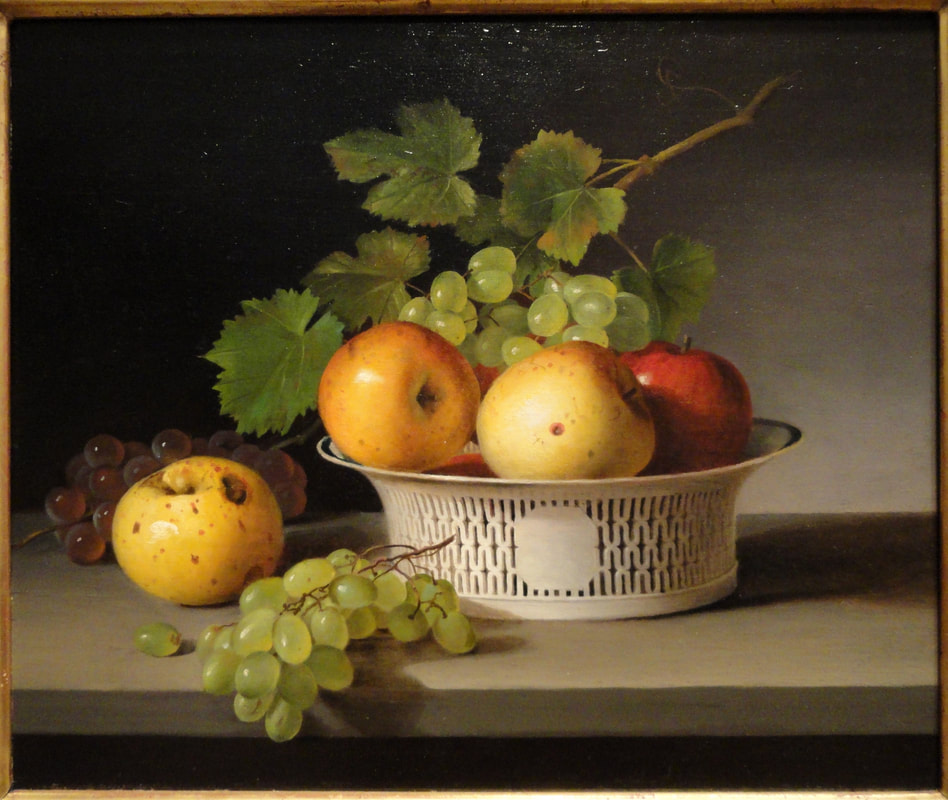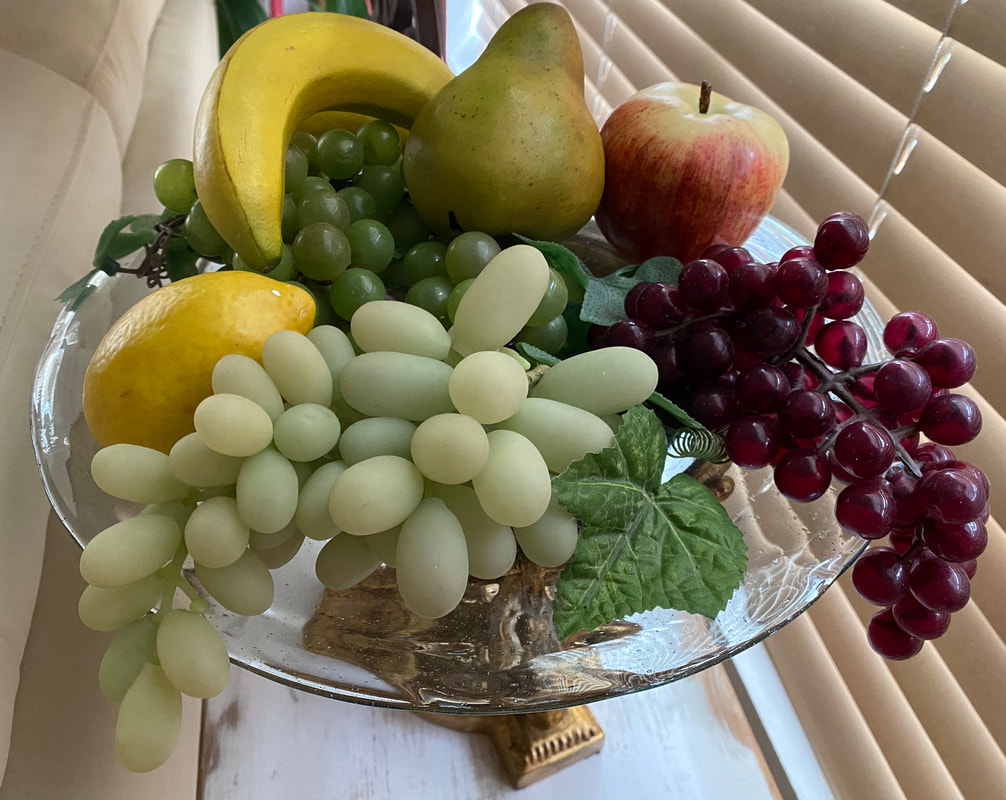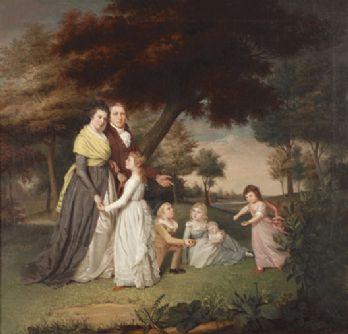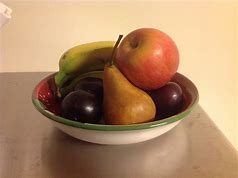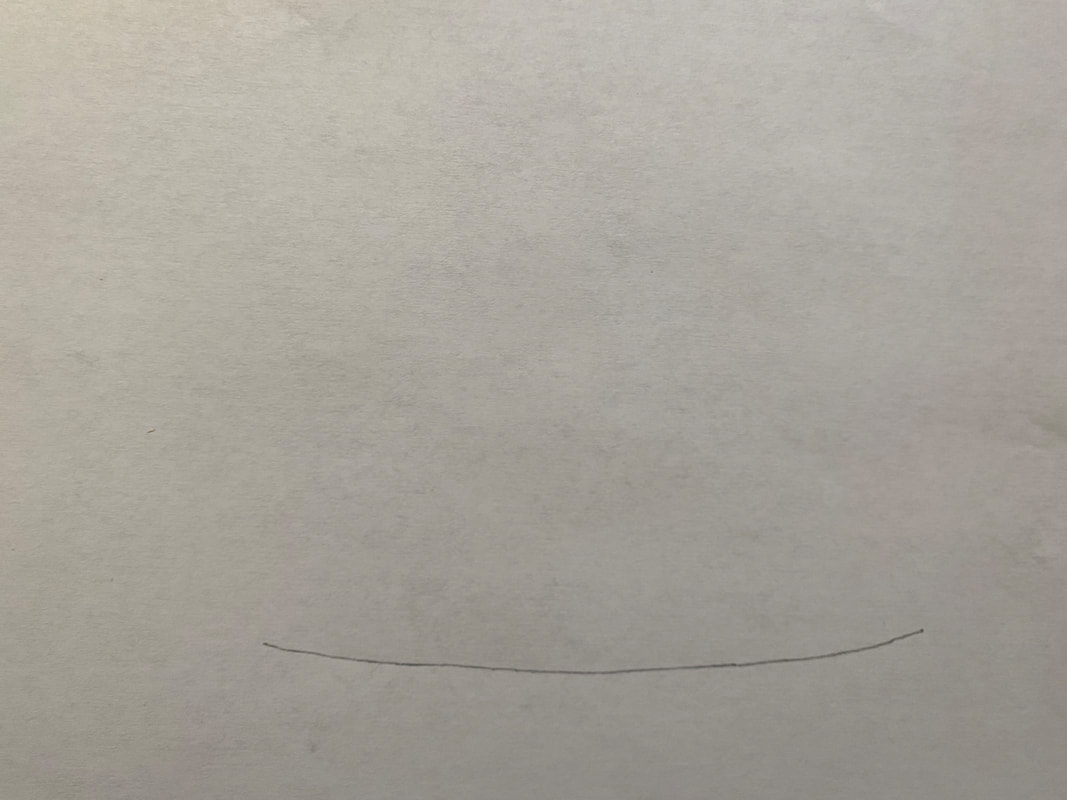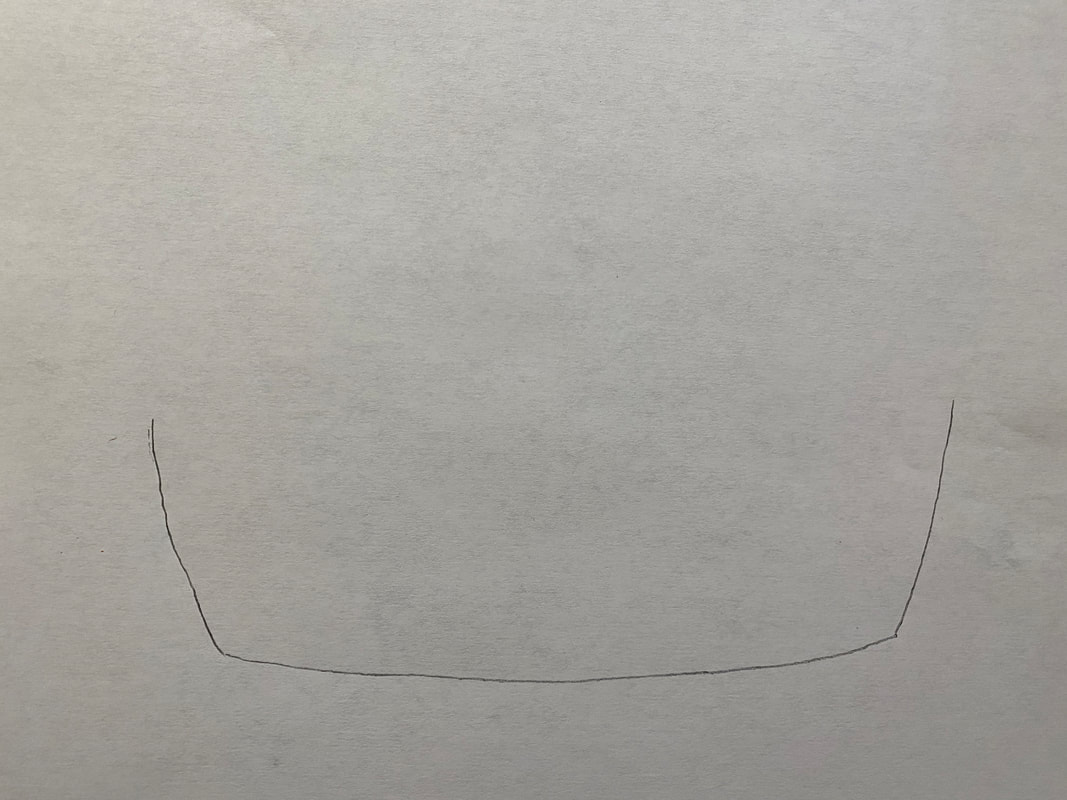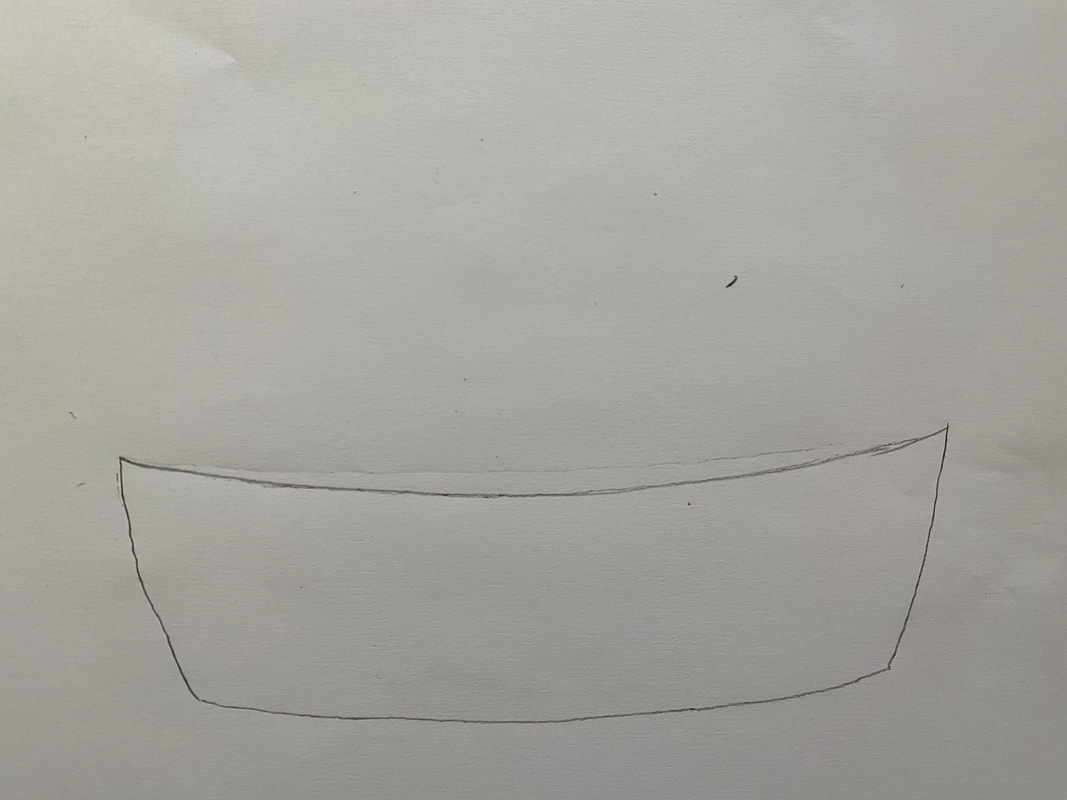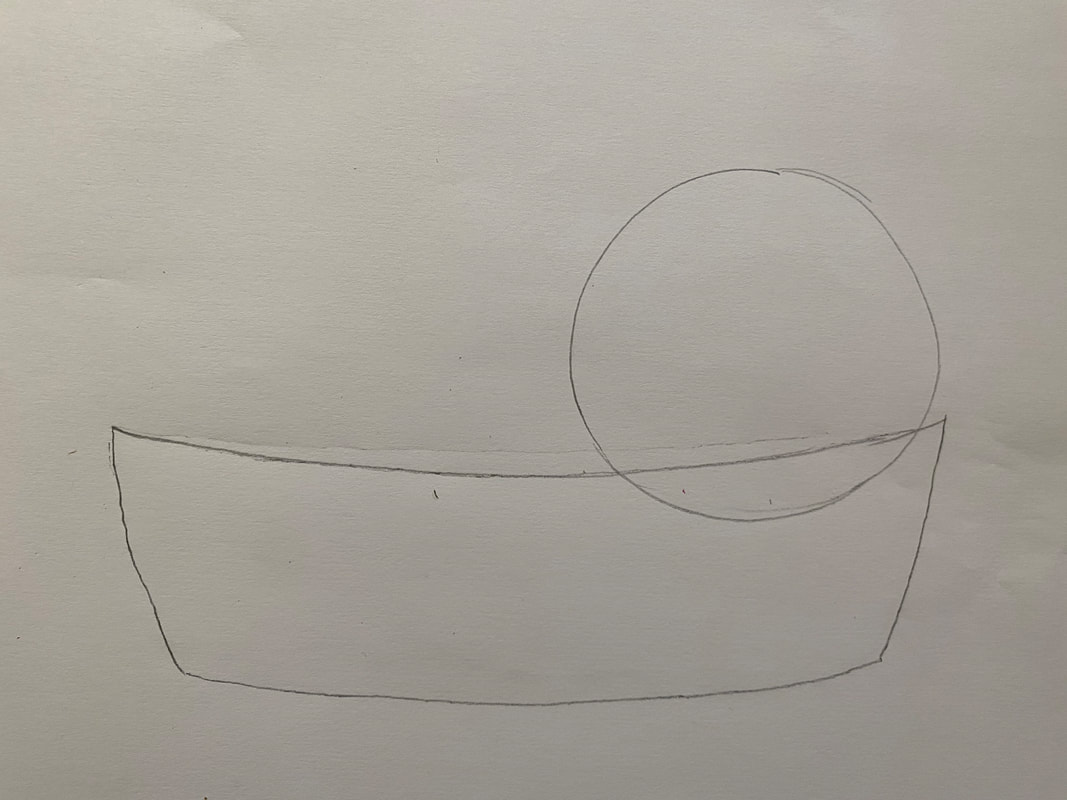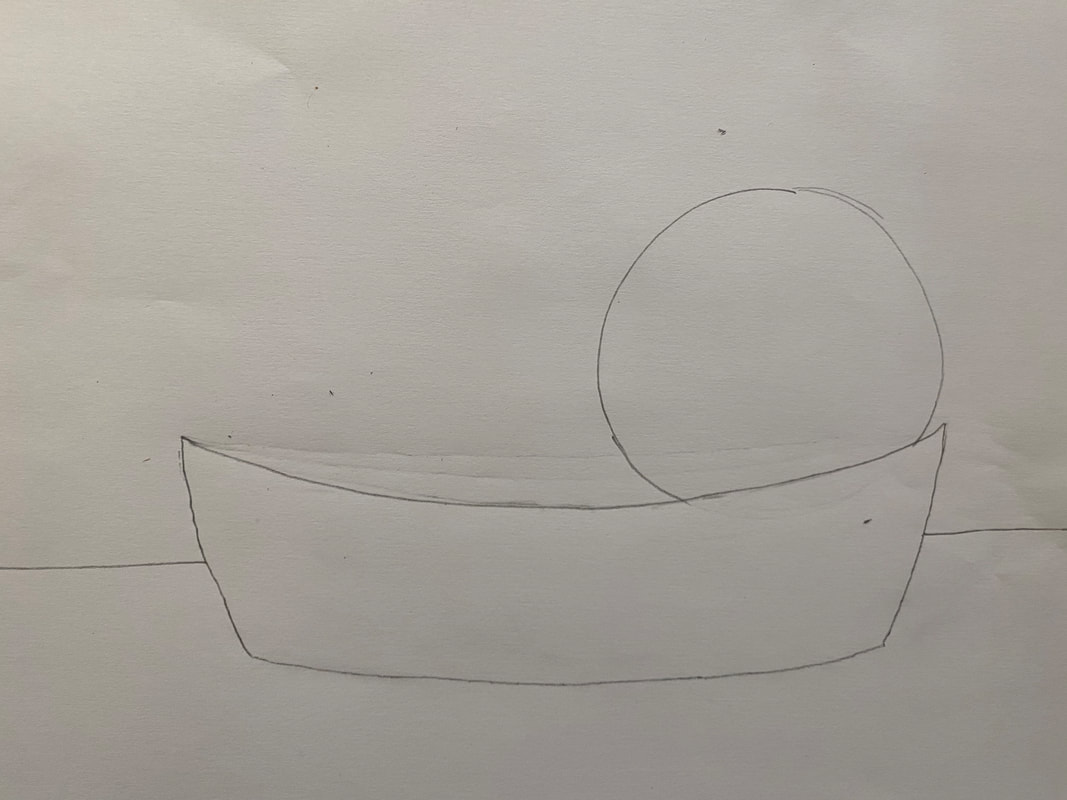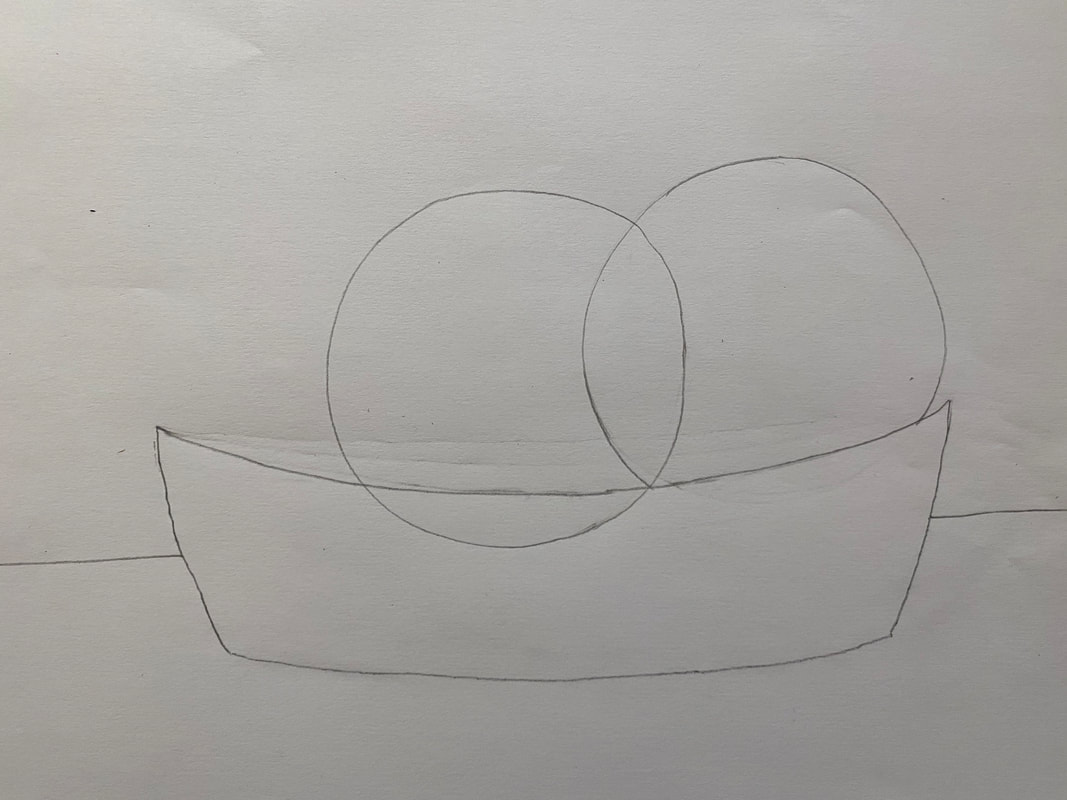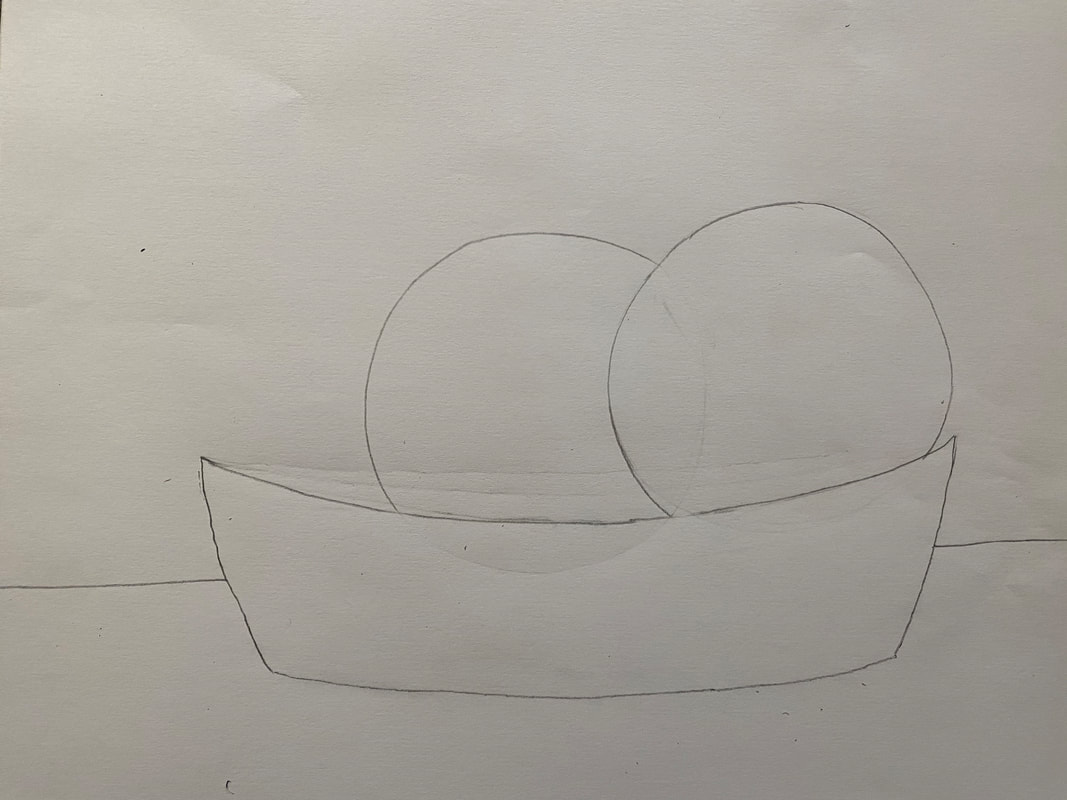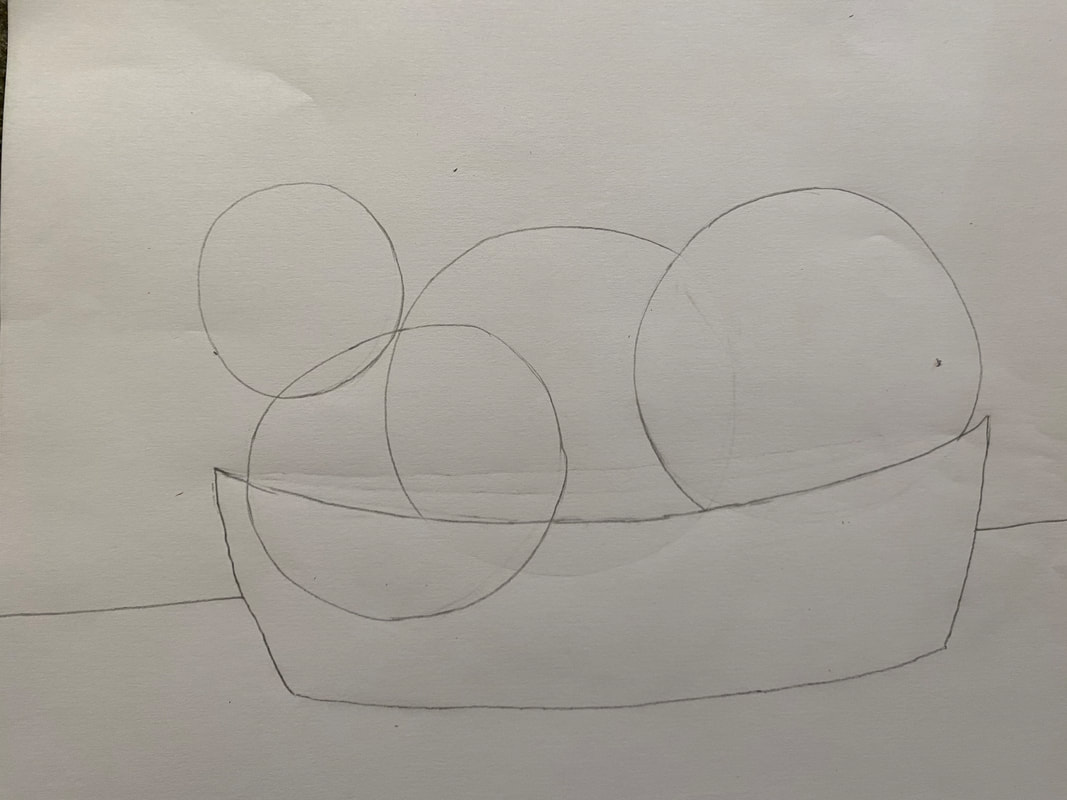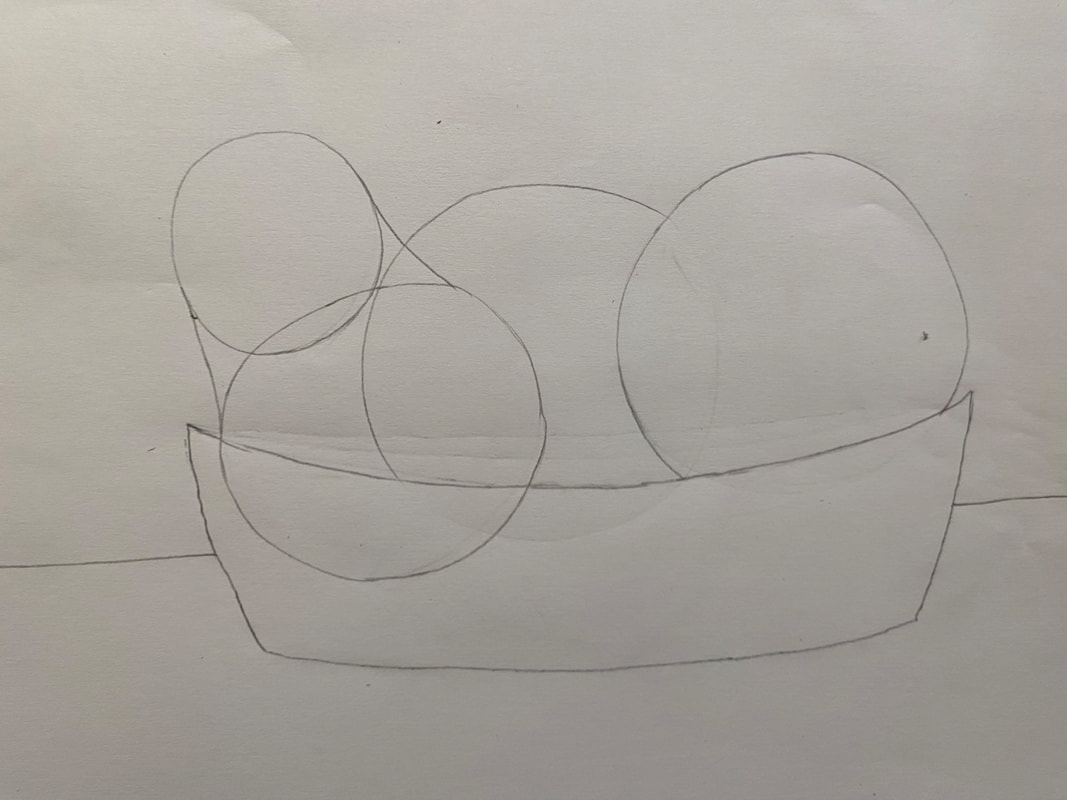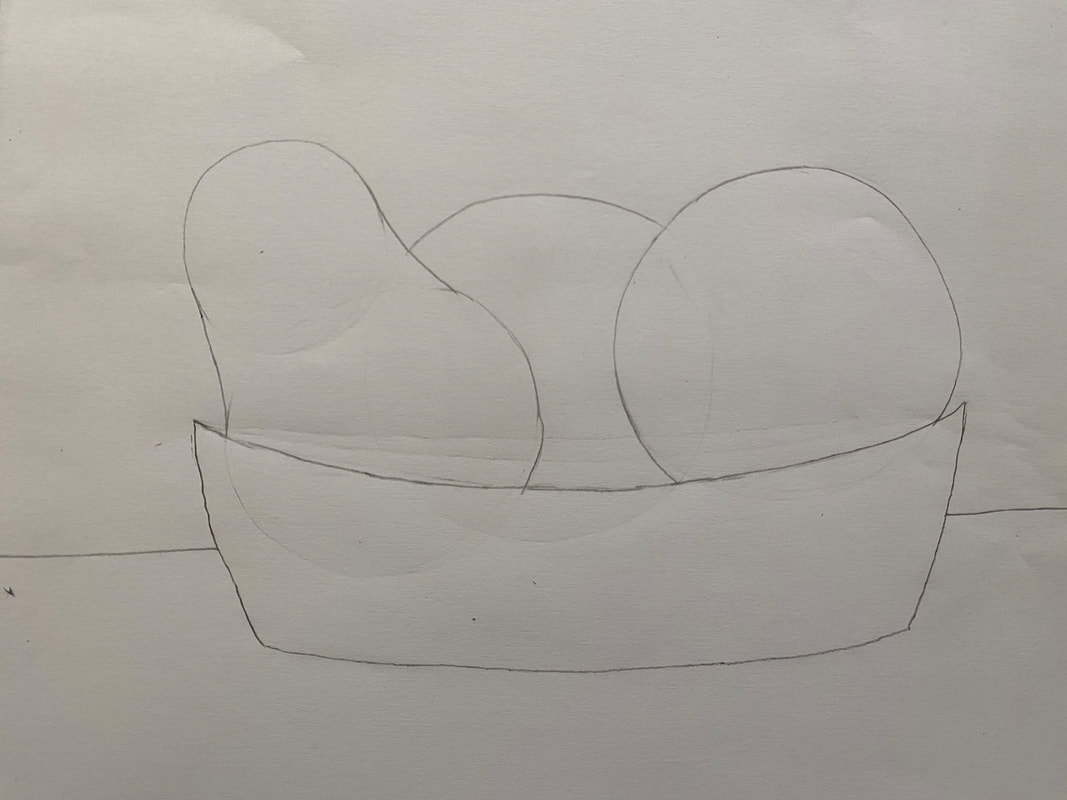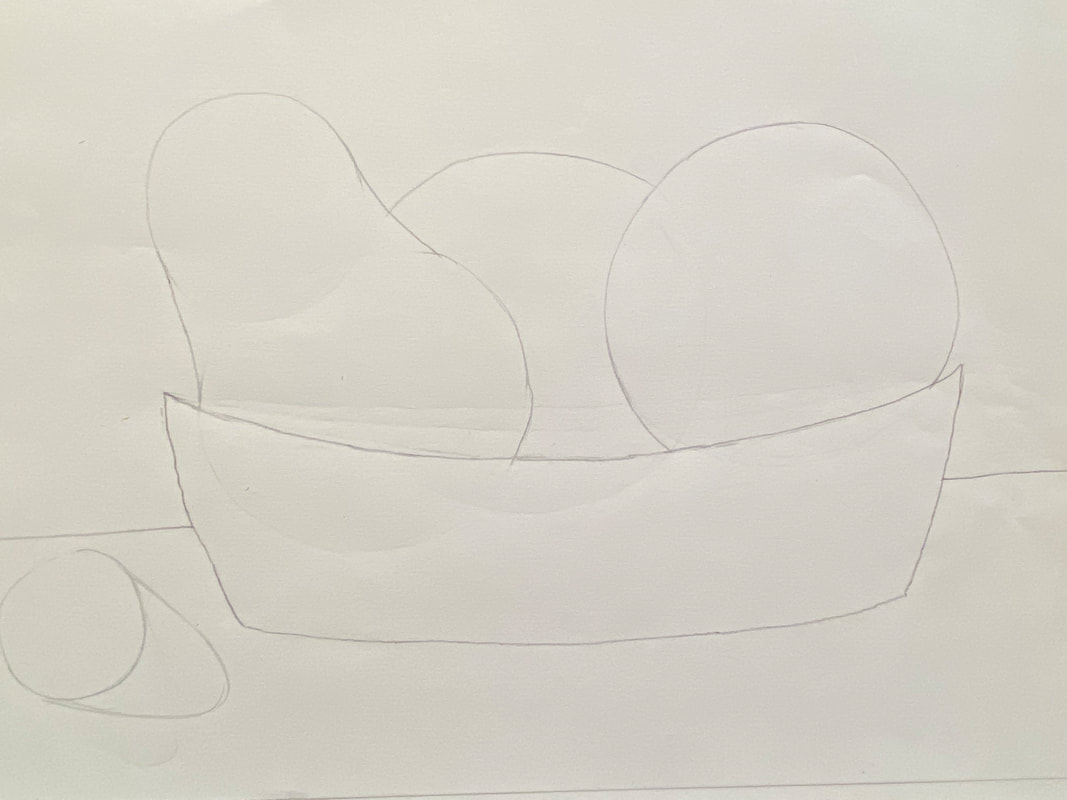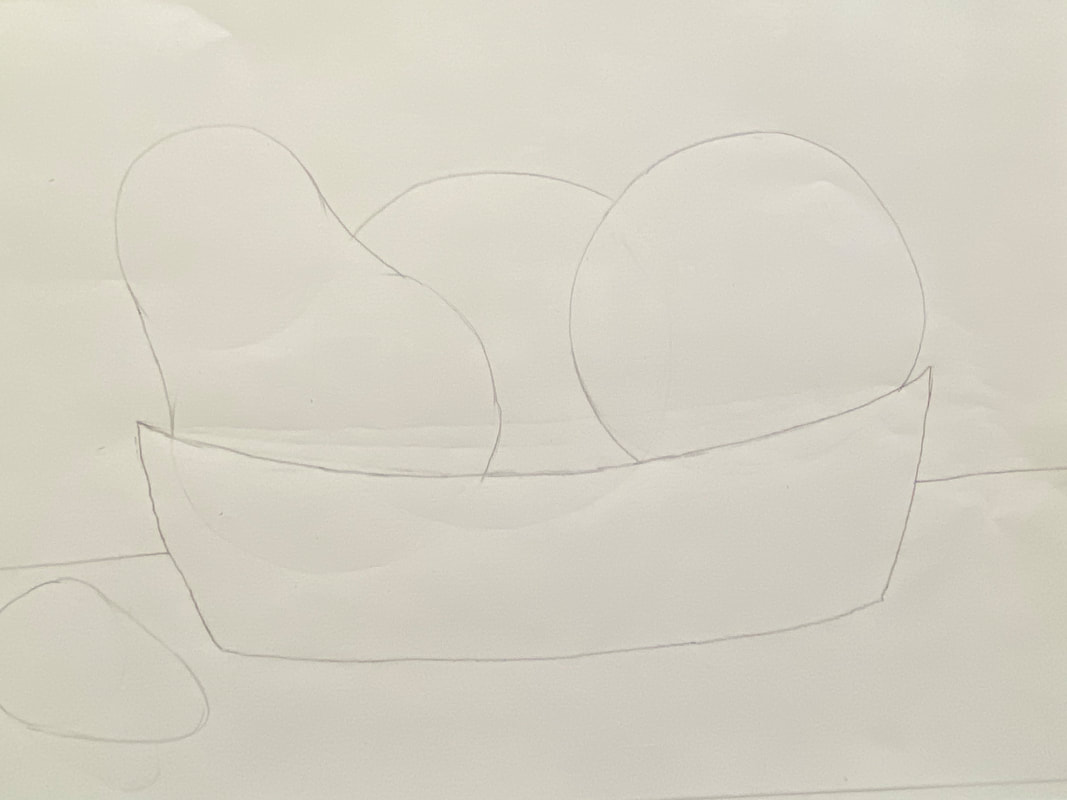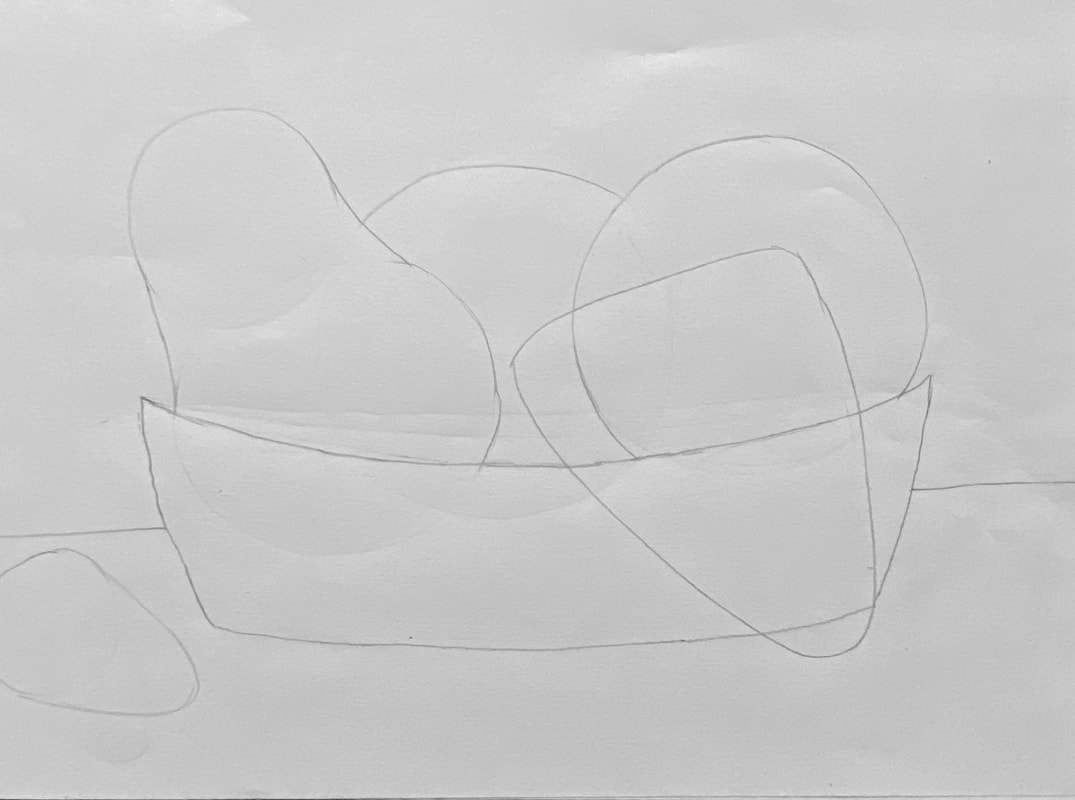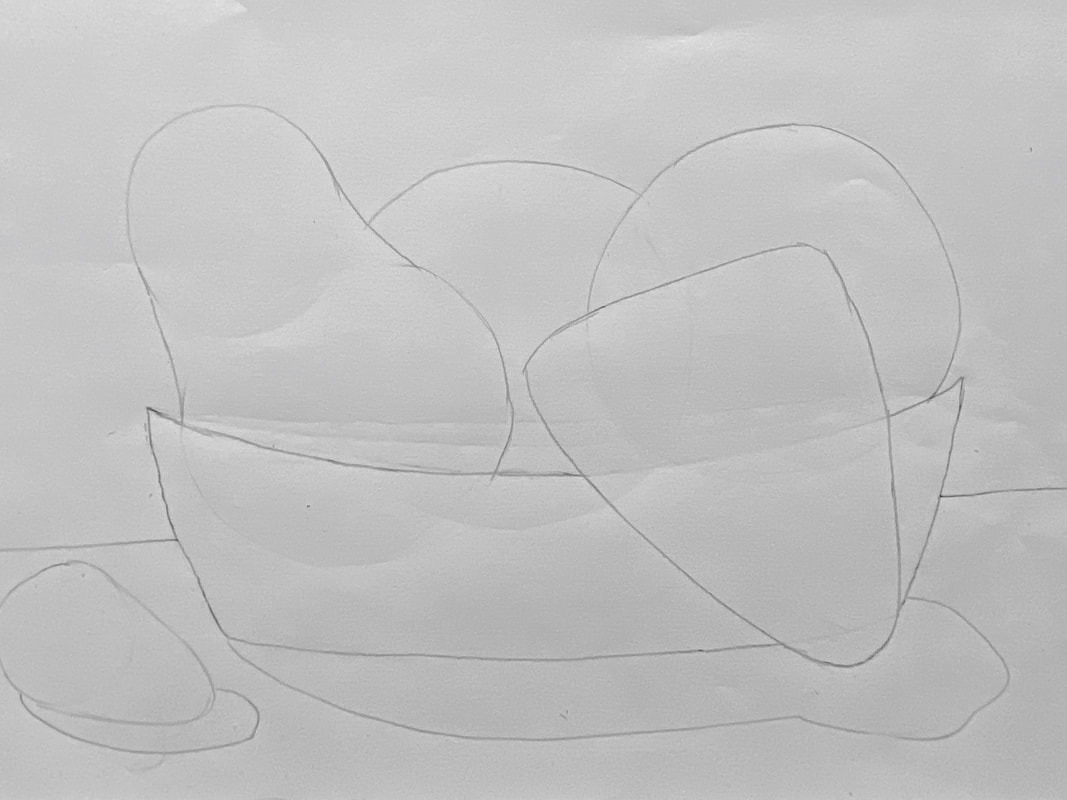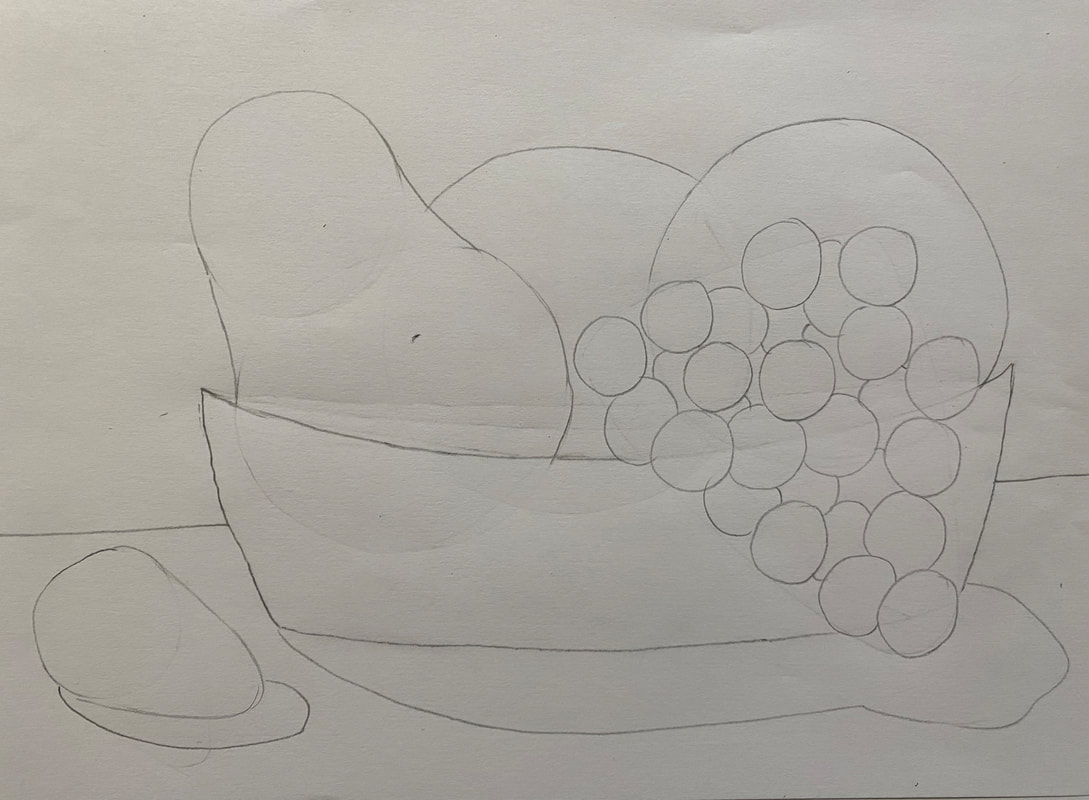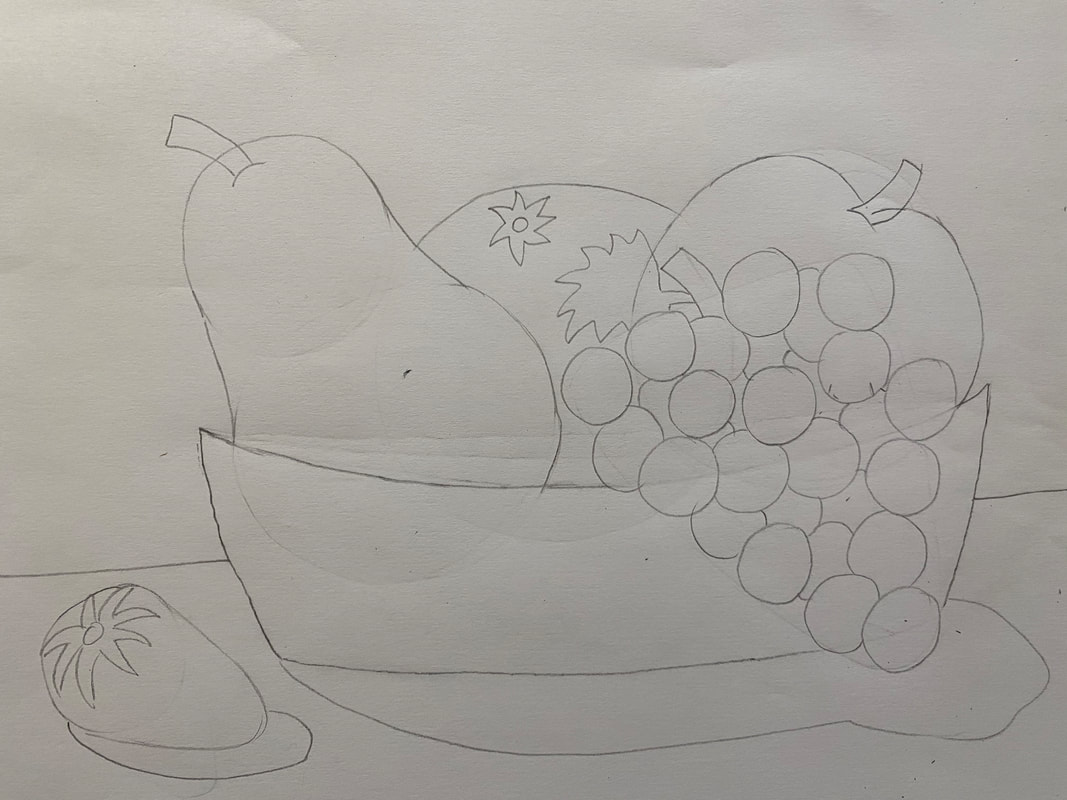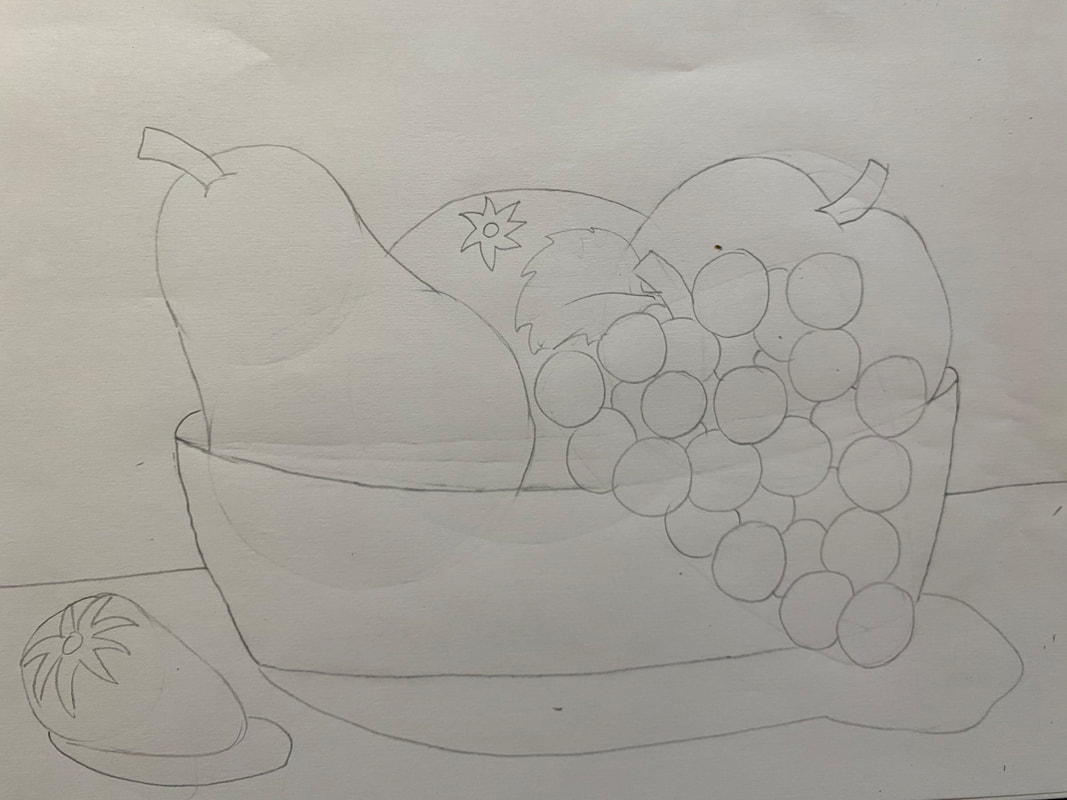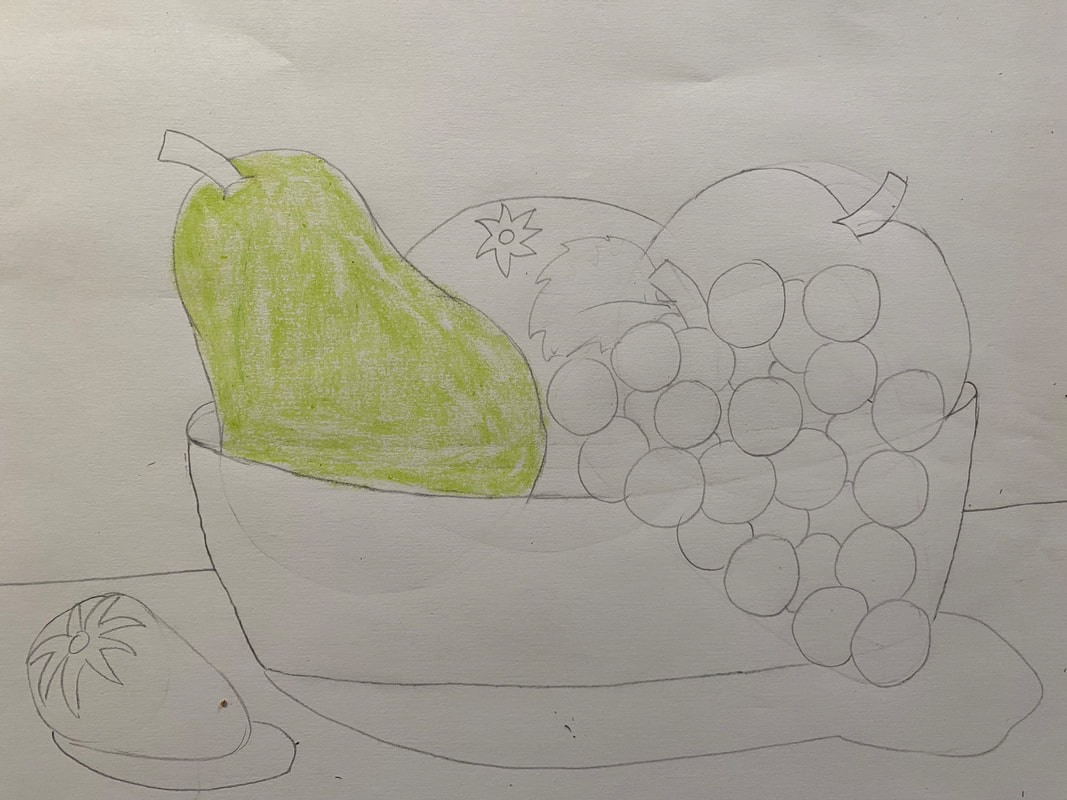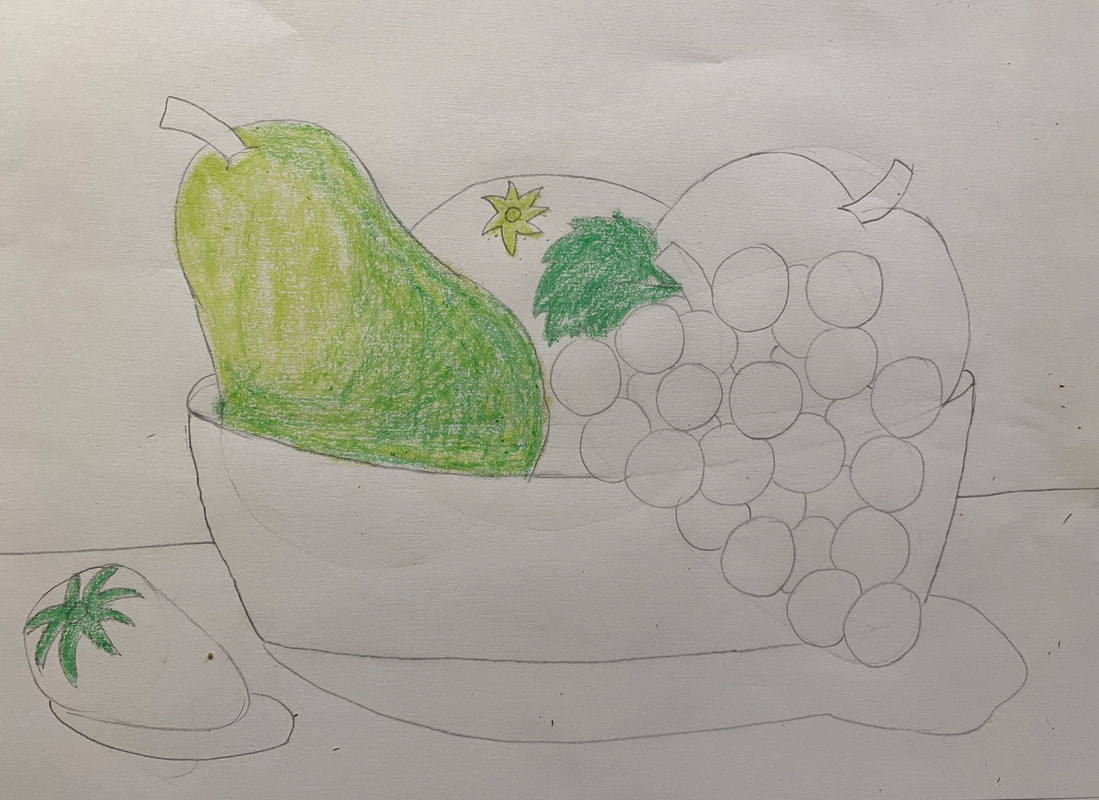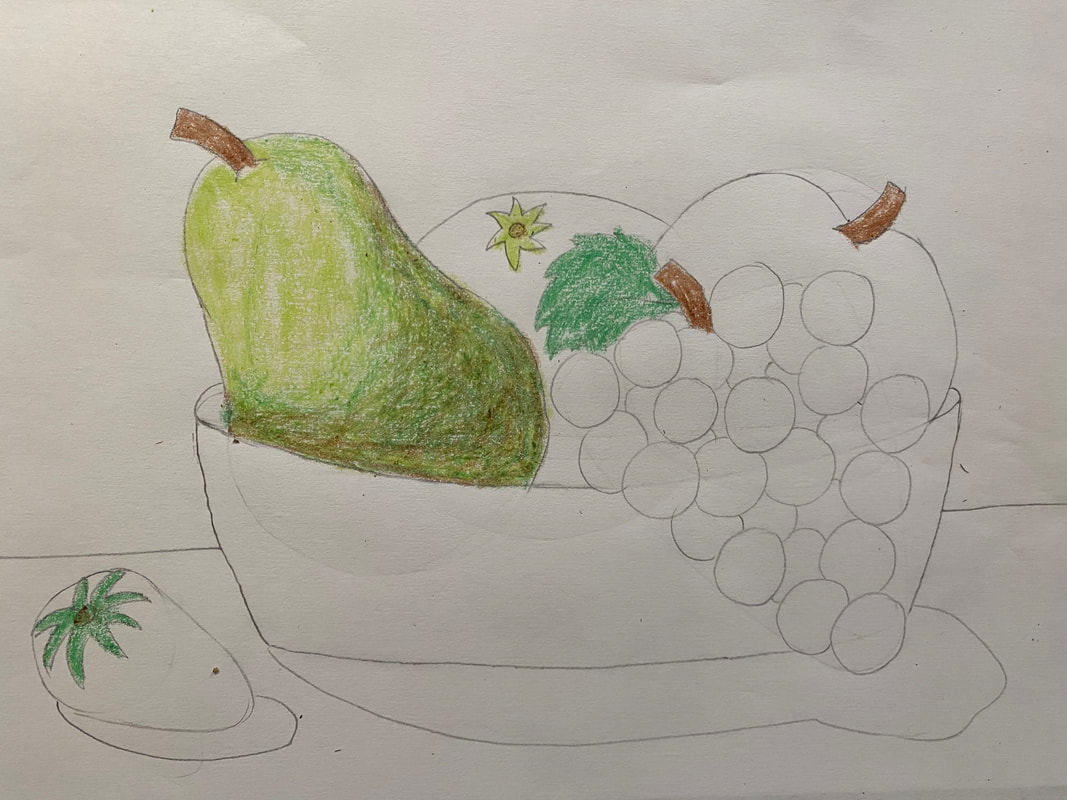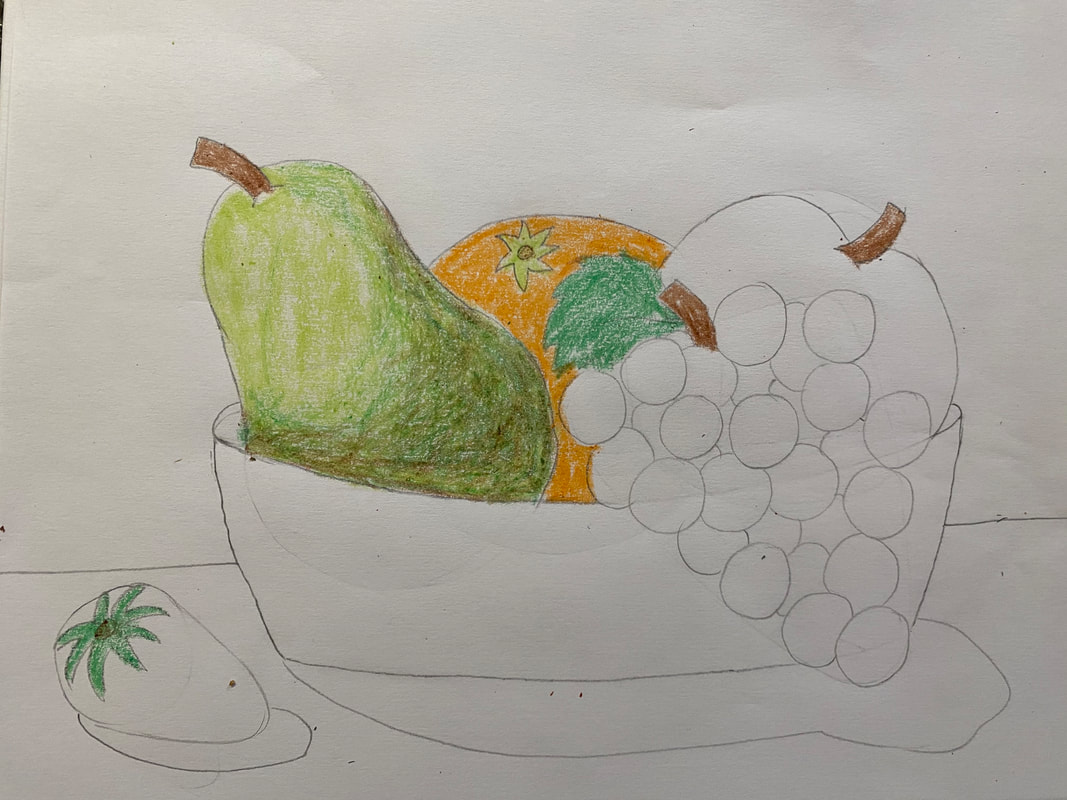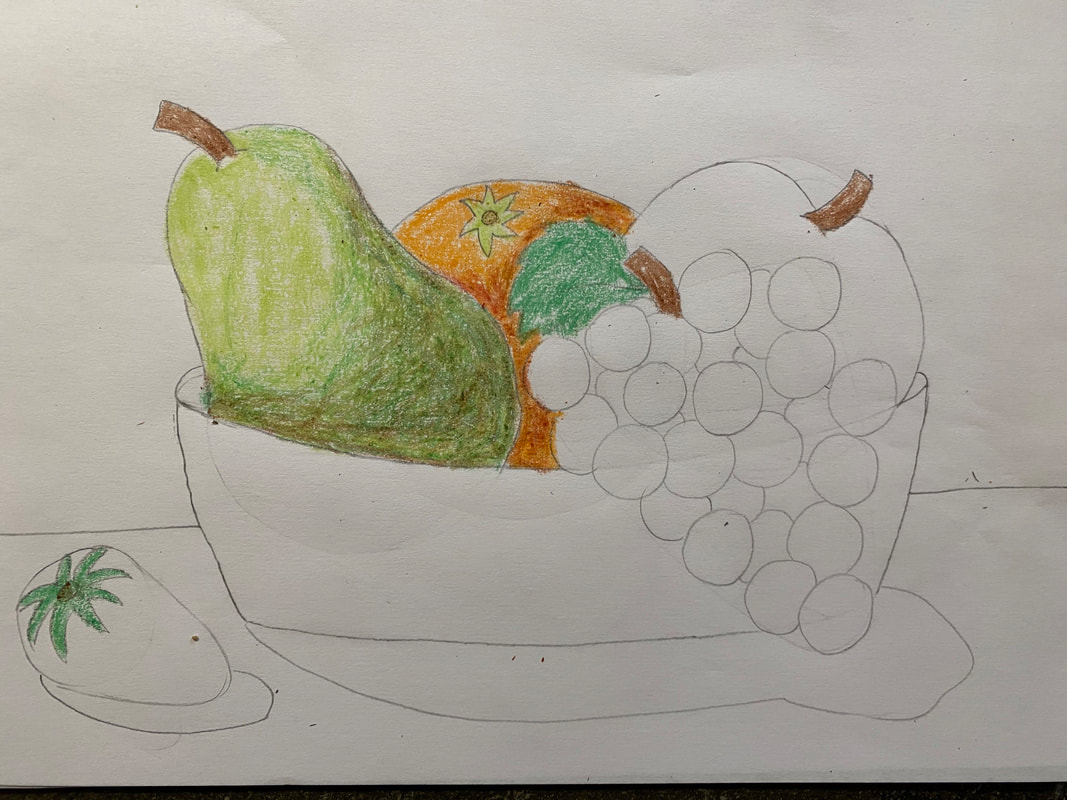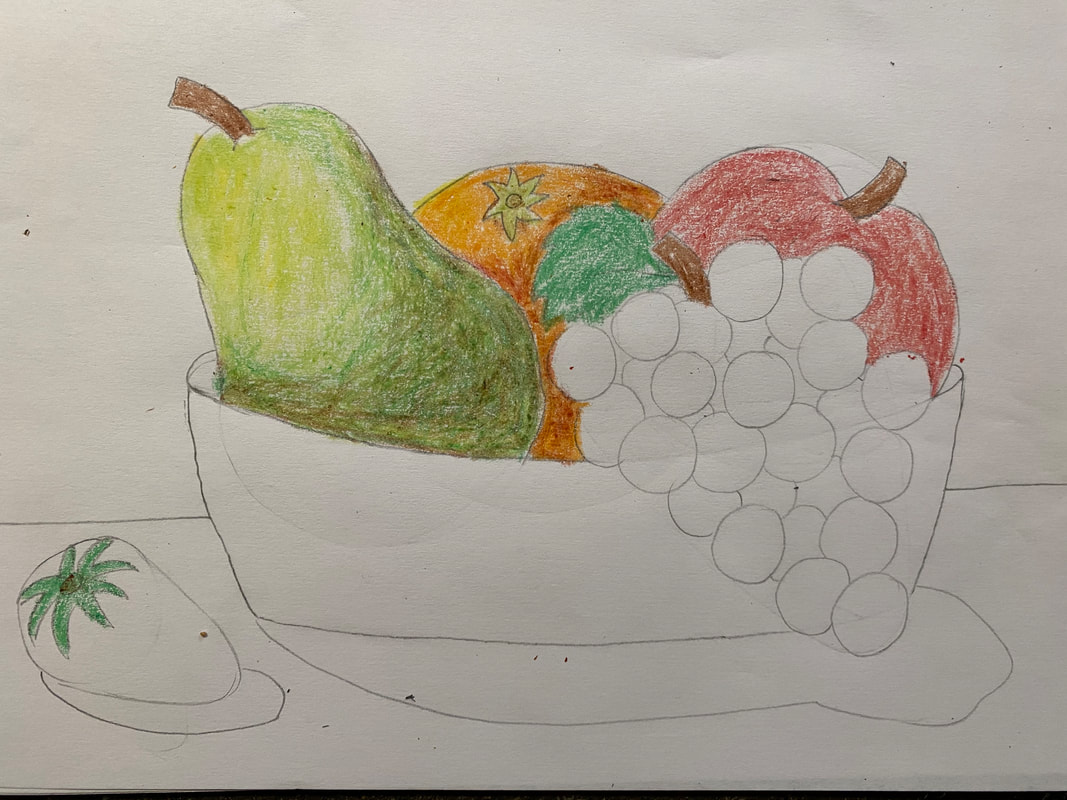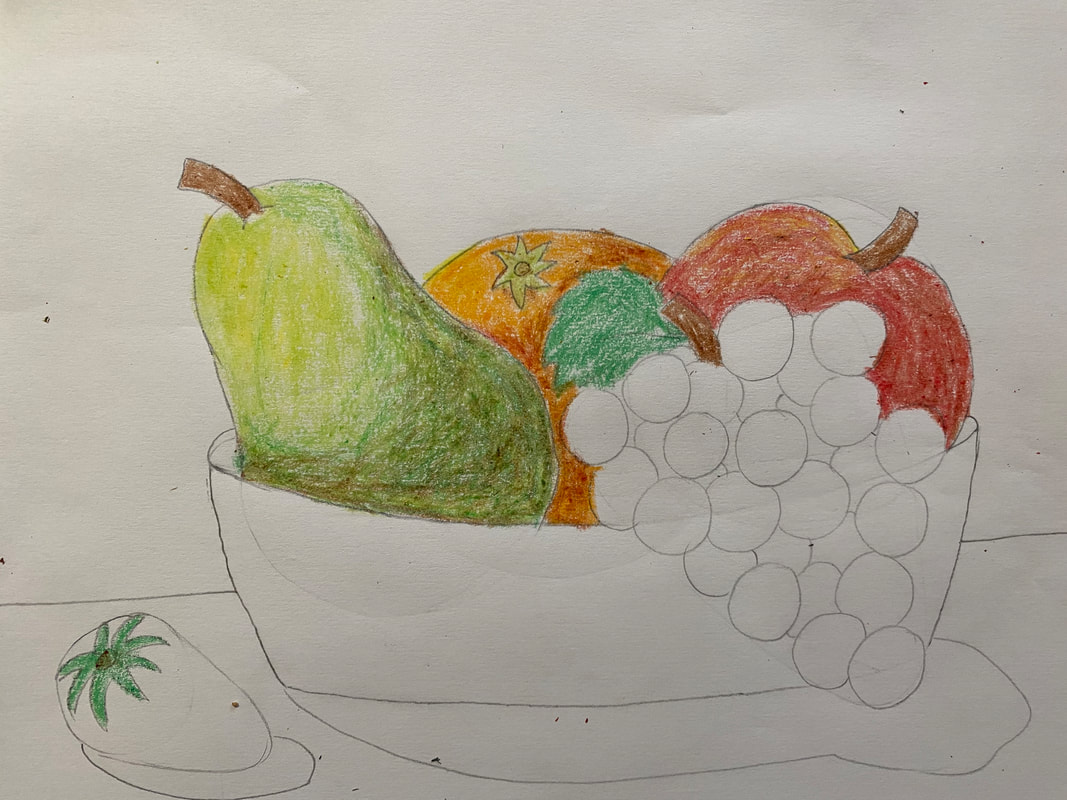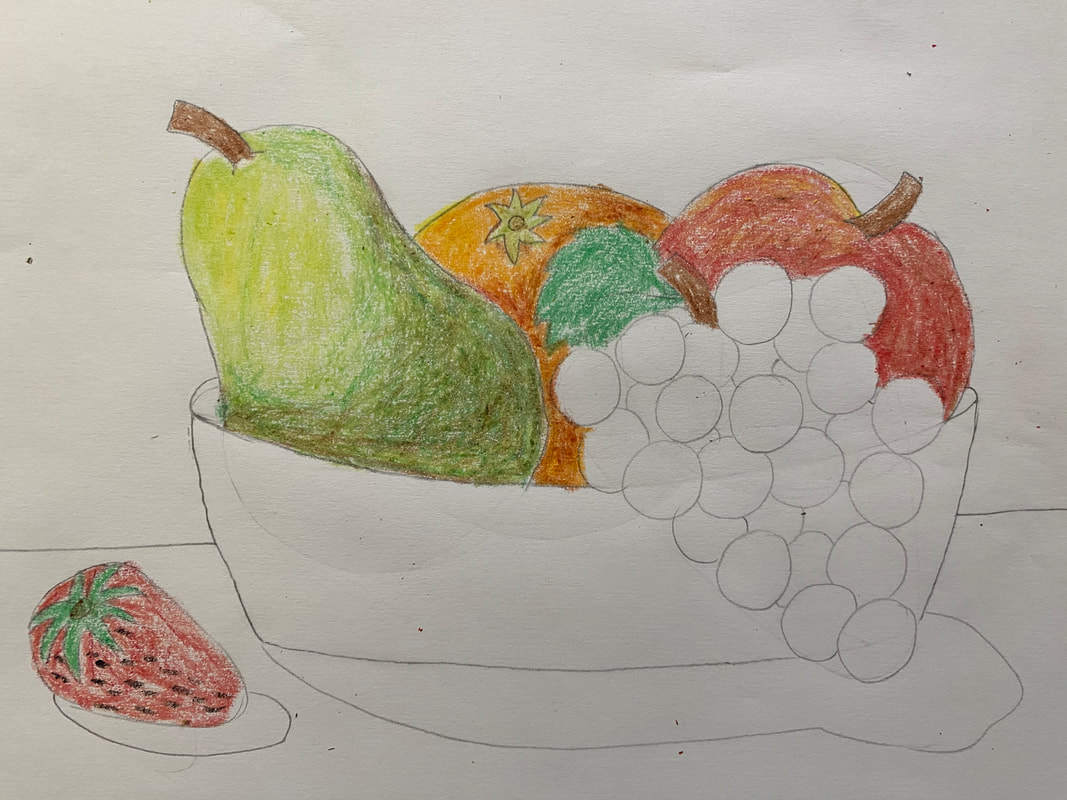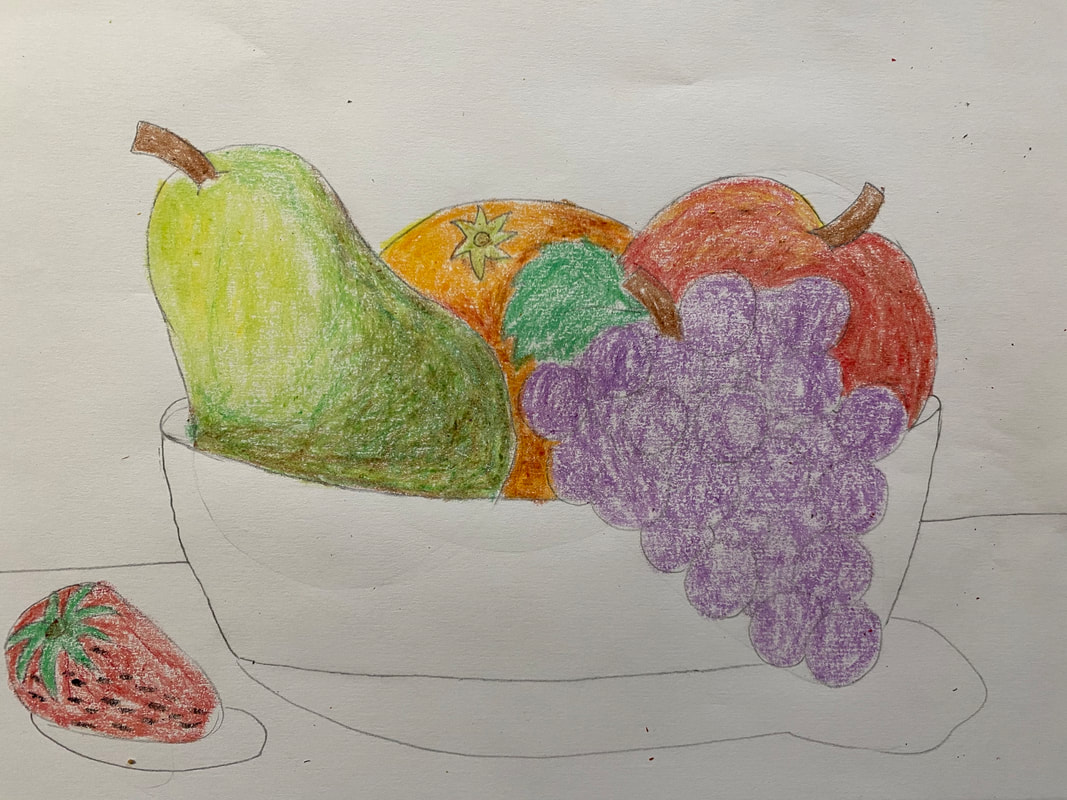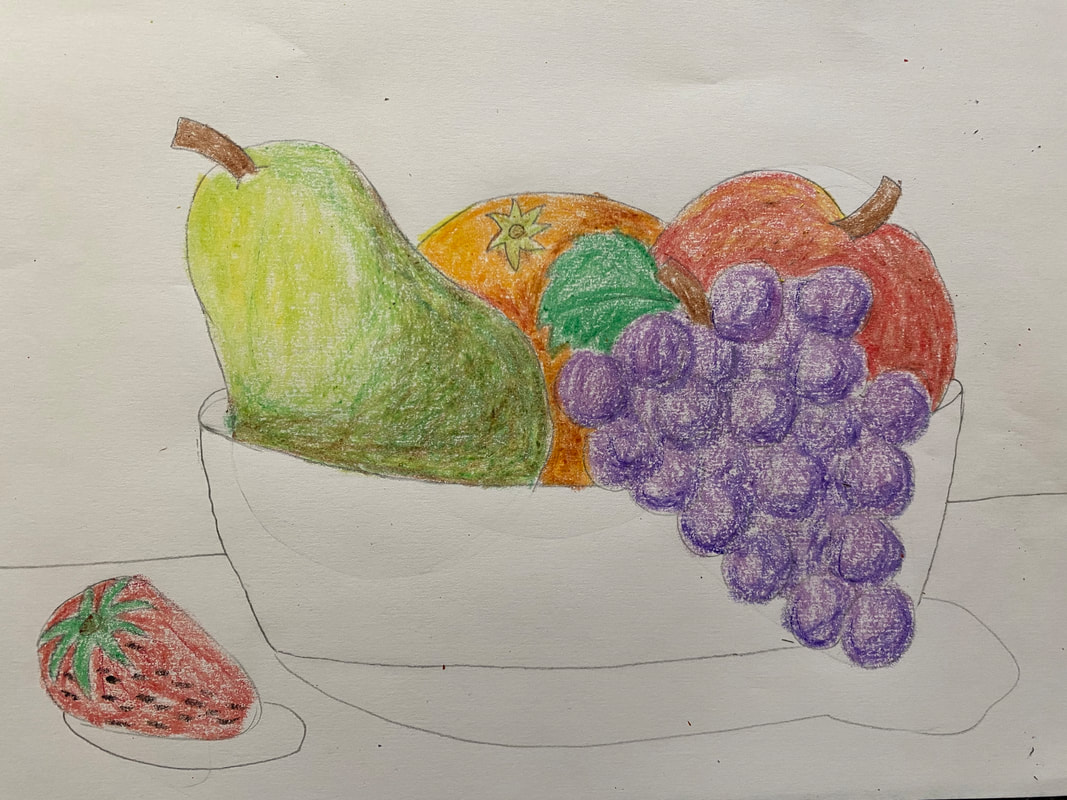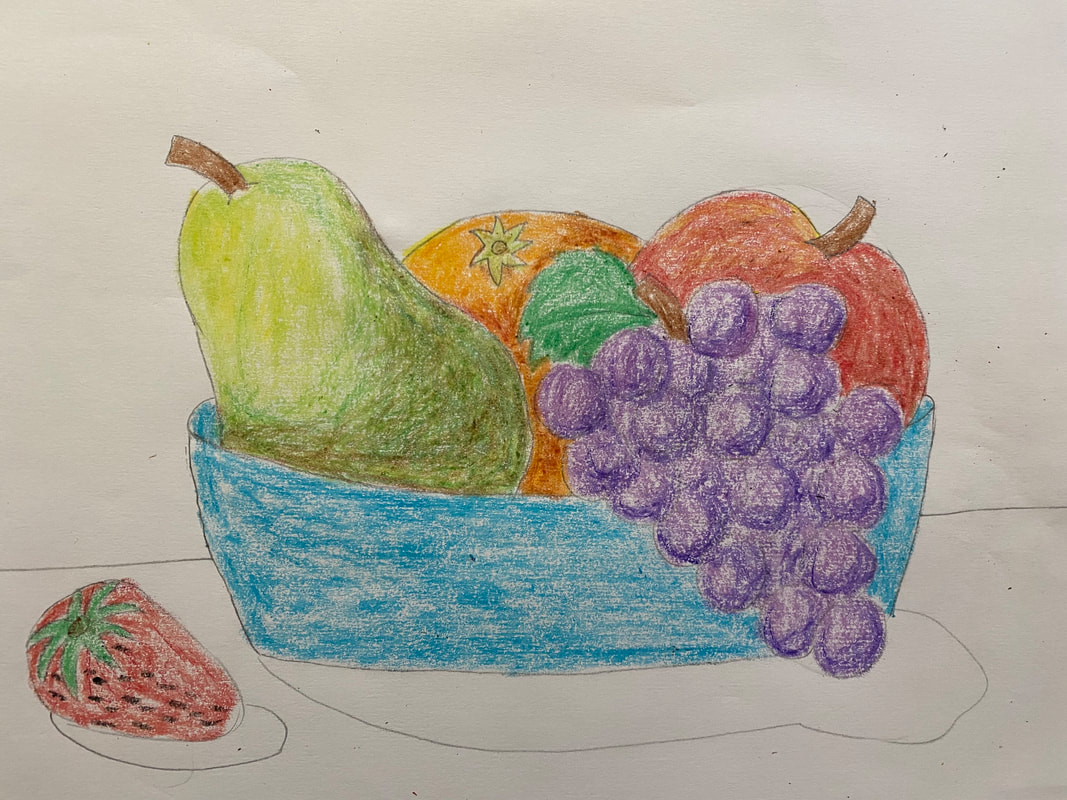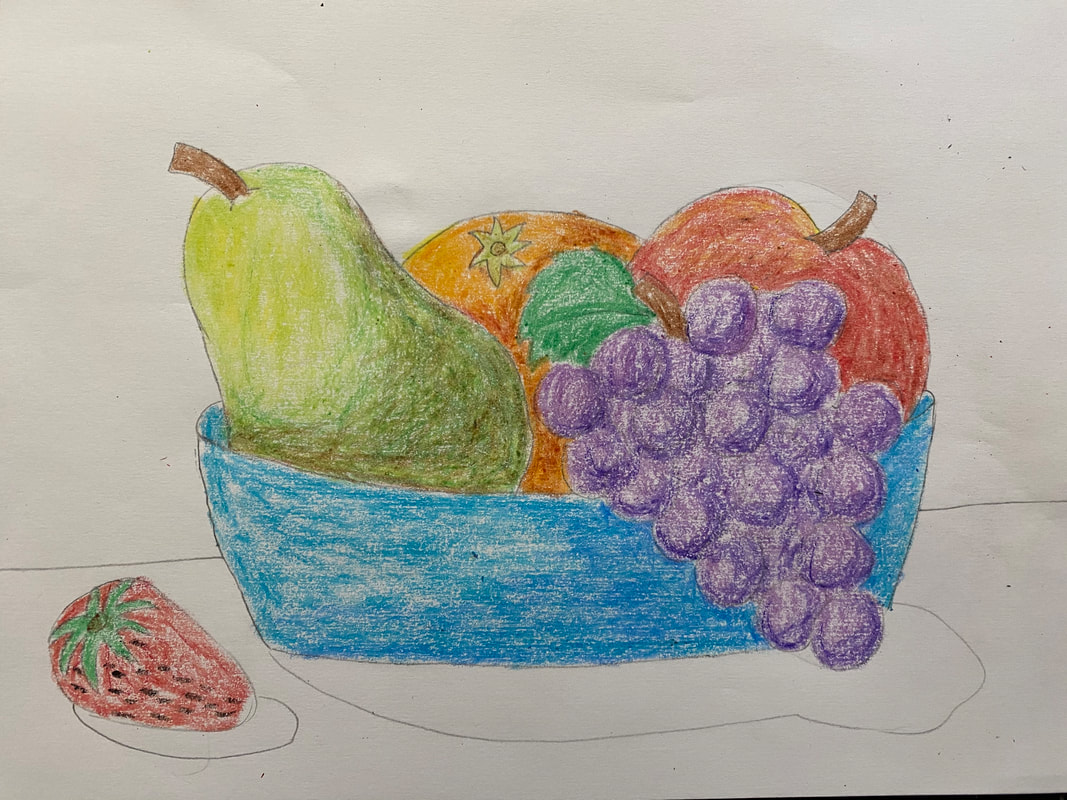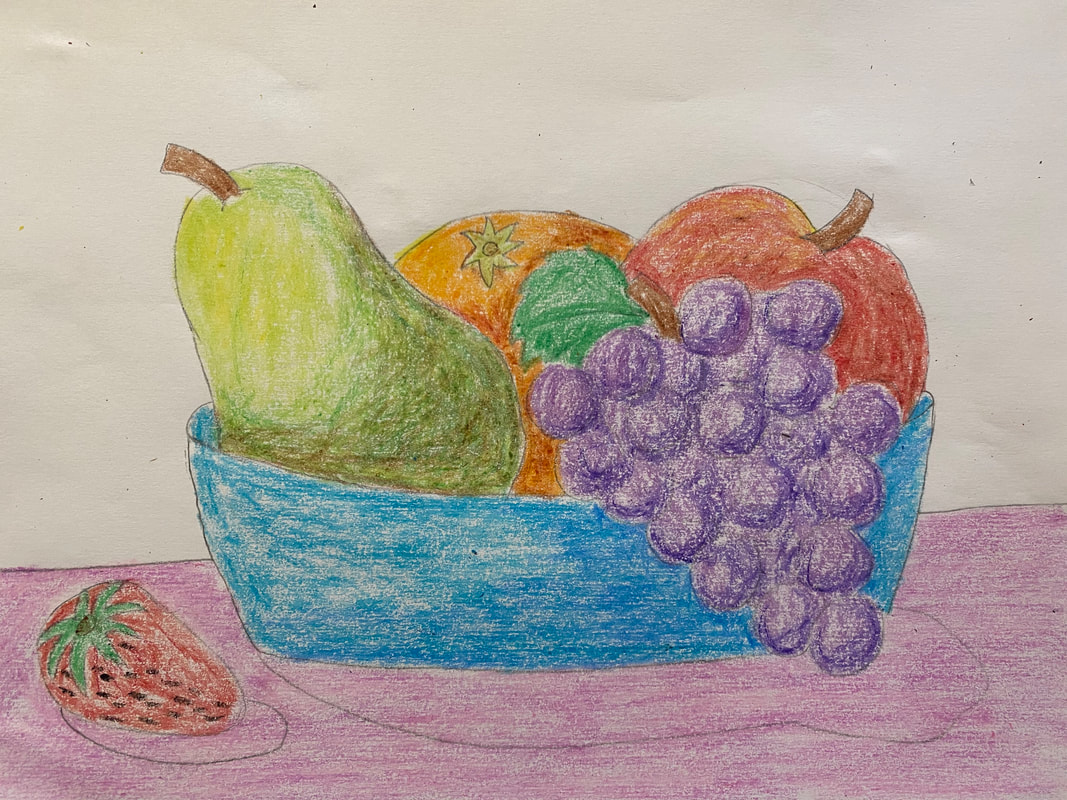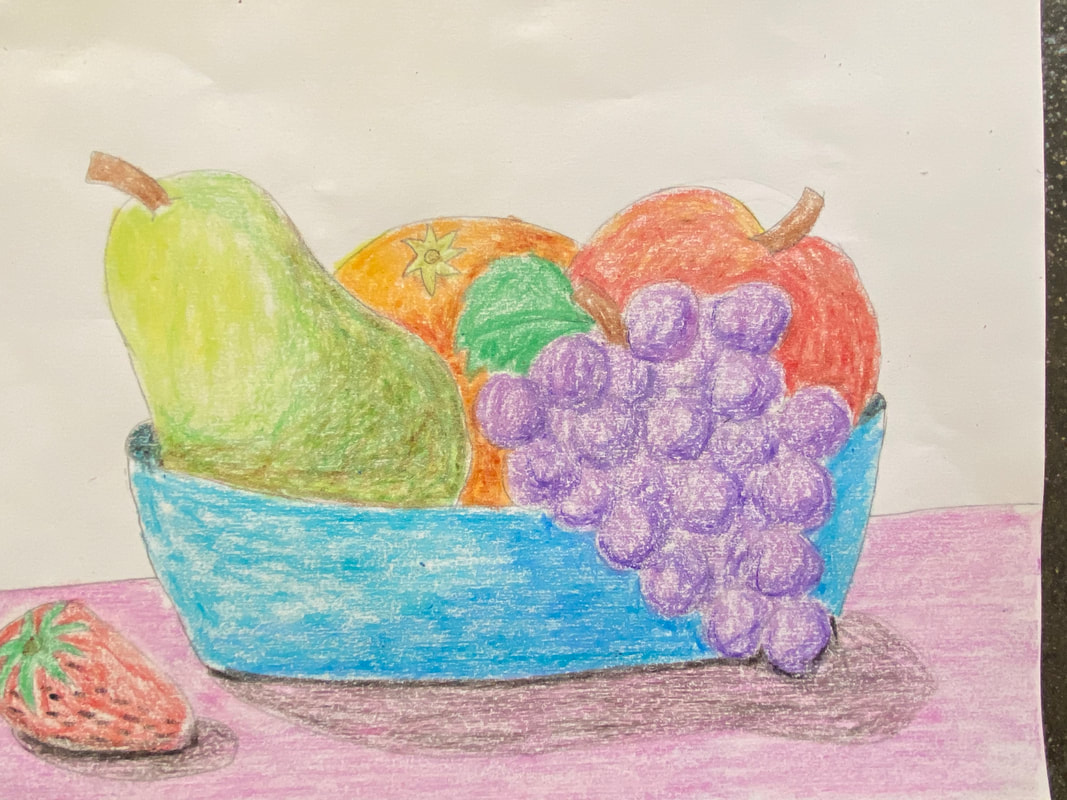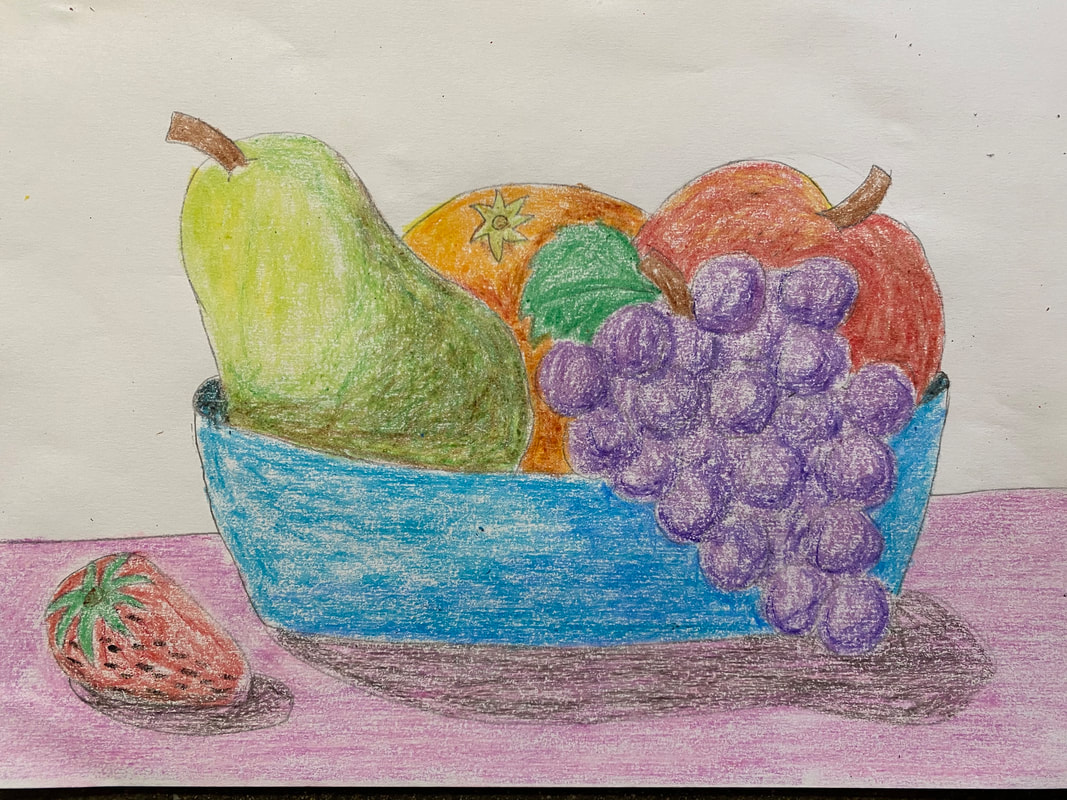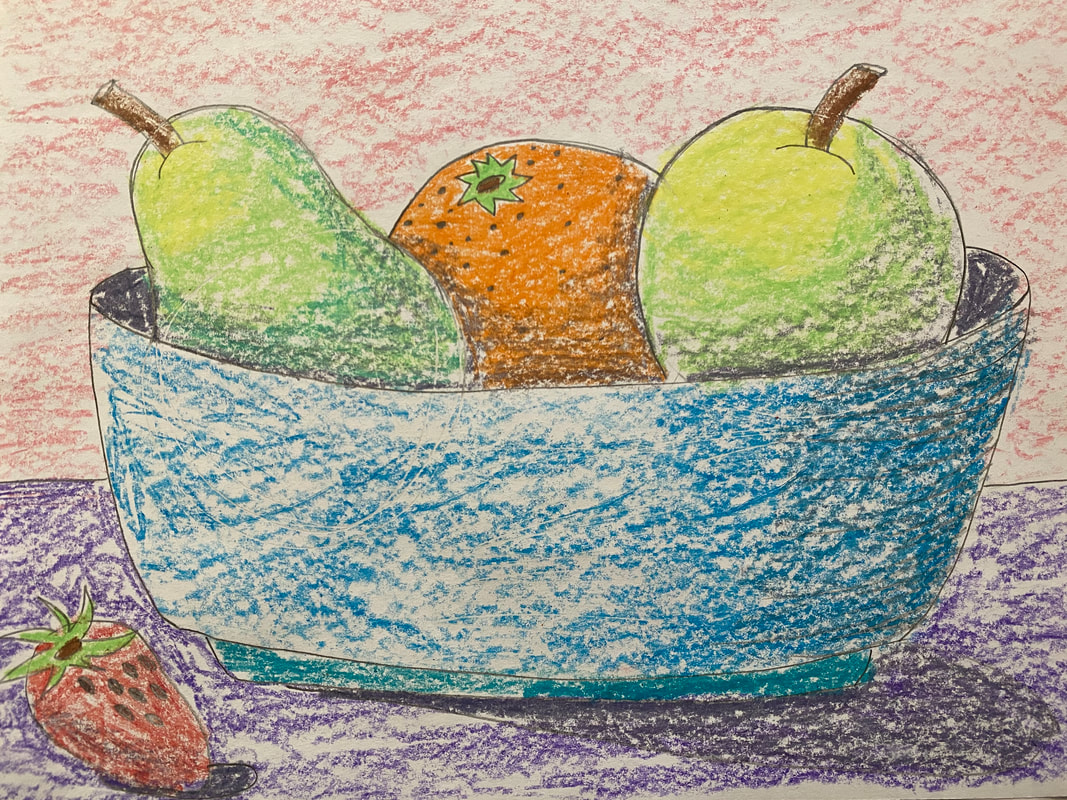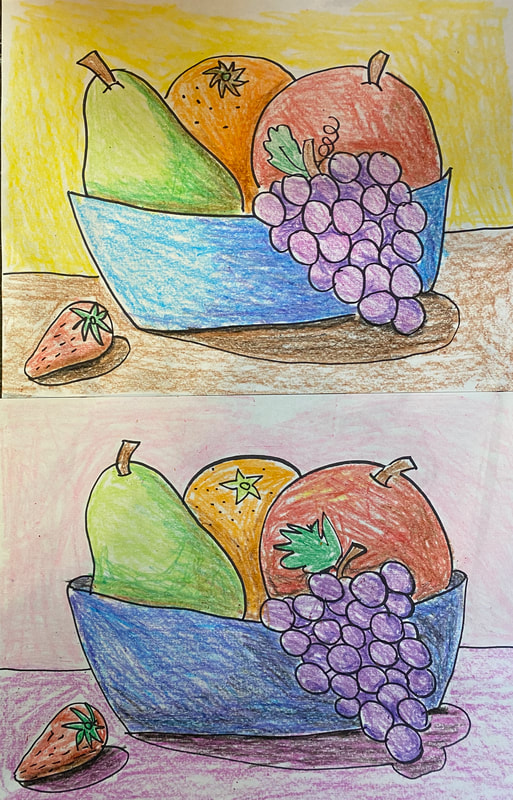how to draw fruit still life
How to draw a bowl of fruit is a 4th grade art lesson. Easy to follow + learn.
Scroll down to find:
Scroll down to find:
- examples of natural bowls of fruit
- Artist James Peale, a realistic painter, is introduced with examples of his work
- step-by-step instructions with pictures of the project
- a lesson plan (including California State Visual Art Standards)
reference
|
James Peale
|
James Peale (1749-1831). c 1824 Still Life with Chinese Export Basket
fruit bowl still life for reference - note shape of various grapes + how they hang over bowl - notice fruit colors + shaded areas that are farthest from source of light
|
The Artist and His Family by James Peale. 1795. Coutesy Pennsylvania Academy of Fine Arts.
bowl of fruit for reference - notice fruit colors = source of light upper right + shadows lower left
|
step-by-step
|
19. green leaf on grapes, top of strawberry, lower right of pear - pear is curved, shading should follow shape of pear
|
20. add some brown for shading on pear - lower right side - color following shape of pear - curved coloring - color stems brown - color circle inside top "star-shape" on orange
|
21. color orange with orange
|
34
objective
Students will learn how to illustrate bowl of fruit. They will be familiar with shadows + what they do to color + how they transform their art work into more advanced pieces. Students will have examples of actual paintings + photographs of fruit bowls for reference.
materials
- white drawing paper approx. 9"x12" or larger if desired
- crayons or colored pencils
- erasers
- pencils
activity
- show students the photographs of actual fruit bowl paintings.
- explain to students that they will illustrate the actual fruit realistically.
- follow step-by-step instructions above to complete art project
- leave ample time for clean-up
- give younger students jobs for clean-up
vocabulary
- Balance - Visual equilibrium in a composition; achieved by organizing the weight and attention of all elements in an artwork. Types of balance are symmetrical, asymmetrical, radial, and crystallographic.Collage - An artistic composition made of various materials (e.g. paper, cloth, or wood) glued on a surface. Color - The visual sensation dependent on the reflection or absorption of light from a given surface. The three characteristics of color are hue, value. and intensity. Color Harmony; The use of compatible colors to help unify a composition.
- Elements of Art - Sensory components used to create works of art ; line, color, shape, texture, value, space.
- Expressive Content - Ideas that express ideas and moods.
- Harmony - The principle of design that combines elements in a work of art to emphasize similarities of separate but related parts.
- Media - Plural of medium, referring to materials used to make art; categories of art (e.g. painting, sculpture, film).
- Proportion - The size relationships of one part to the whole and of one part to another.
- Realistic - Representing familiar things in a way that is accurate or true to life.
- Scale - The size of an object or image that is measured by its relationship to the other objects and images that are recognized for their normal or actual size.
- Space - An area in which objects or images can exist.
- Shape - A two-dimensional are or plane that may be open or closed, free-form or geometric. It can be found in nature or is made by humans.
- Overlap - When one thing is put over another.
- Primary Colors - Refers to colors red, yellow, and blue. From these all other colors are created.
- Secondary Colors - Colors that are mixtures of two primaries. Red and yellow make orange, yellow and blue make green, and blue and red make violet.
- Unity - Total visual effect in a composition
variation
- use paint, oil pastel, chalk pastel to color with
- add other fruit to bowl or sitting on table ( lemon - kiwi - tropical fruit )
ca state visual arts standards
1.0 ARTISTIC PERCEPTION
Develop Perceptual Skills and Visual Arts Vocabulary
1.1 Describe and replicate repeated patterns in nature, in the environment, and in works of art.
3.0 HISTORICAL AND CULTURAL
Understanding the Historical Contributions and Cultural Dimensions of the Visual Arts
3.2 Identify and describe various subject matter in art (e.g., landscapes, seascapes, portraits, still life)
2.0 CREATIVE EXPRESSION
Creating, performing, and Participating in the Visual Arts.
Students apply artistic processes and skills, using a variety of media to communicate meaning and intent in original works of art.
Communication and Expression Through Original works of Art
2.4 Plan and use variations in line, shape/form, color, and texture to communicate ideas or feelings in works. of art.
2.7 Use visual and actual texture in original works of art.
4.0 AESTHETIC VALUING
Making Informed Judgements
4.4 Select something they like about their work of art and something they would change.
